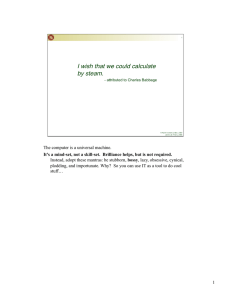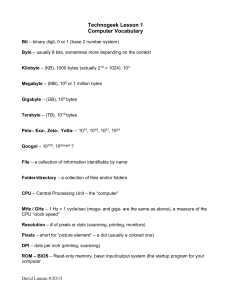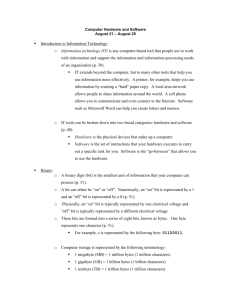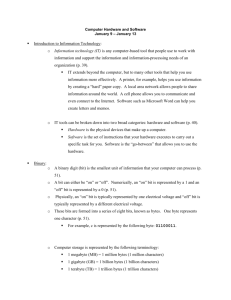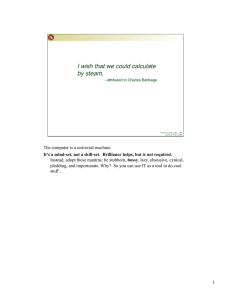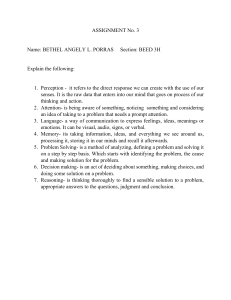Parts of a Microcomputer & Memory
advertisement
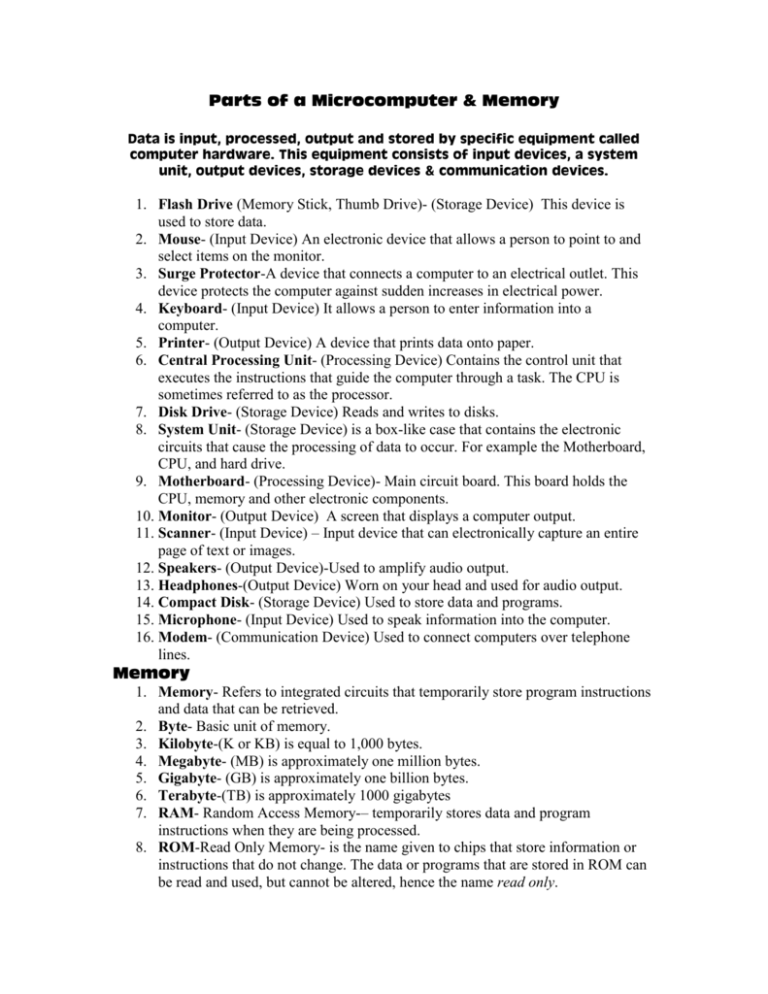
Parts of a Microcomputer & Memory Data is input, processed, output and stored by specific equipment called computer hardware. This equipment consists of input devices, a system unit, output devices, storage devices & communication devices. 1. Flash Drive (Memory Stick, Thumb Drive)- (Storage Device) This device is used to store data. 2. Mouse- (Input Device) An electronic device that allows a person to point to and select items on the monitor. 3. Surge Protector-A device that connects a computer to an electrical outlet. This device protects the computer against sudden increases in electrical power. 4. Keyboard- (Input Device) It allows a person to enter information into a computer. 5. Printer- (Output Device) A device that prints data onto paper. 6. Central Processing Unit- (Processing Device) Contains the control unit that executes the instructions that guide the computer through a task. The CPU is sometimes referred to as the processor. 7. Disk Drive- (Storage Device) Reads and writes to disks. 8. System Unit- (Storage Device) is a box-like case that contains the electronic circuits that cause the processing of data to occur. For example the Motherboard, CPU, and hard drive. 9. Motherboard- (Processing Device)- Main circuit board. This board holds the CPU, memory and other electronic components. 10. Monitor- (Output Device) A screen that displays a computer output. 11. Scanner- (Input Device) – Input device that can electronically capture an entire page of text or images. 12. Speakers- (Output Device)-Used to amplify audio output. 13. Headphones-(Output Device) Worn on your head and used for audio output. 14. Compact Disk- (Storage Device) Used to store data and programs. 15. Microphone- (Input Device) Used to speak information into the computer. 16. Modem- (Communication Device) Used to connect computers over telephone lines. Memory 1. Memory- Refers to integrated circuits that temporarily store program instructions and data that can be retrieved. 2. Byte- Basic unit of memory. 3. Kilobyte-(K or KB) is equal to 1,000 bytes. 4. Megabyte- (MB) is approximately one million bytes. 5. Gigabyte- (GB) is approximately one billion bytes. 6. Terabyte-(TB) is approximately 1000 gigabytes 7. RAM- Random Access Memory-– temporarily stores data and program instructions when they are being processed. 8. ROM-Read Only Memory- is the name given to chips that store information or instructions that do not change. The data or programs that are stored in ROM can be read and used, but cannot be altered, hence the name read only.

